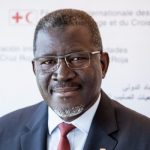A message to the World Humanitarian Summit
Humanitarians are forever striving for order. In spite of (or perhaps because of) the chaos that we see on a daily basis, we have an overwhelming urge to categorize, to organize. We distinguish between mandates, we cluster by sector and we respond in phases.
Of course we know that this is at least partly artificial. When conflict starts or a disaster hits, we respond, adapt, innovate and find new solutions to unexpected challenges. But as the situation calms, we use those experiences to reclassify, refine and refocus. A revised order emerges.
The changes we have seen over the past five years have forced some of us to ask whether the very foundations of this order are still relevant. We are witnessing more and more protracted conflicts plunging people into dire need and making it difficult to classify humanitarian contexts. Increasingly we encounter the same communities affected by multiple hazards: conflicts compounded by disasters, disasters aggravated by climate change and the acute risks associated with unplanned urbanization. We see them taking initiatives, too, building their own resilience, but also having very specific needs.
We are also observing a globalization of fragility and humanitarian needs. We can no longer consider suffering and vulnerability to be the sole domains of the global south (if this was ever really possible). The majority of the world’s poor live in middle- and upper-income countries. The arrival of more than 1 million vulnerable migrants on European shores in 2015 illustrated the regional and global consequences of chronic and intractable suffering.
Needs are changing and our response must adapt accordingly. The World Humanitarian Summit is an opportunity to do just that. Collective and collaborative responses should go beyond traditional boundaries, mandates and thinking. No single organization can hope to respond to the needs of vulnerable communities.
Crucially, these partnerships need to embrace the extremely important role of local humanitarian organizations, including National Red Cross and Red Crescent Societies. The international system still places too much emphasis on international actors, leaving local organizations with not enough influence over decision-making and not enough access to global humanitarian financing.
 Red Cross Red Crescent magazine
Red Cross Red Crescent magazine 







 Tech & Innovation
Tech & Innovation Climate Change
Climate Change Volunteers
Volunteers Health
Health Migration
Migration